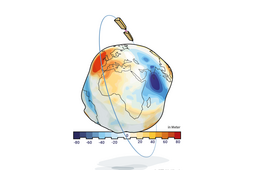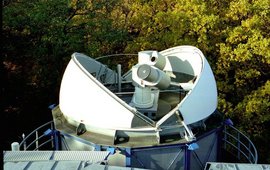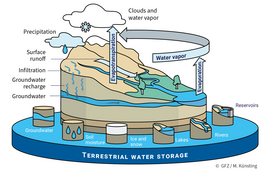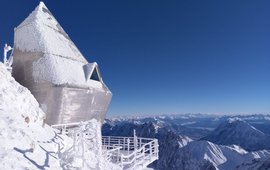
The Earth gravity field including its temporal variations is a key parameter for understanding the system Earth. Dedicated gravity satellite missions such as CHAMP, GRACE, GOCE, GRACE-FO, or GRACE-C to a large extent developed, operated and analysed by Section 1.2, enable to study mass distribution and mass transport on various spatial and temporal scales. In addition, we use terrestrial gravimetric data and data obtained on mobile platforms (e.g. on ships or airplanes) for regional evaluations or for the calculation of high-resolution global gravity field models in combination with satellite data and digital elevation models and density information.
We use GNSS (Global Navigation Satellite System), DORIS (Doppler Orbitography and Radiopositioning Integrated by Satellite) and SLR (Satellite Laser Ranging) observations for precise orbit determination of various LEO (Low Earth Orbiting) satellites. In addition, we use geodetic satellites such as LAGEOS or LARES to determine the long-wavelength components of the gravity field. For the ILRS (International Laser Ranging Service) and the IDS (International DORIS Service), we regularly supply coordinates of the corresponding ground stations and Earth orientation parameters, thereby making a significant contribution to the continuous improvement of the ITRF (International Terrestrial Reference Frame).
Consistent analyses and modelling of all existing space-borne gravity sensors and space geodetic techniques as well as simulation studies for e.g. future gravity satellite mission concepts are integratively performed with our inhouse software package EPOS (Earth Parameter and Orbit System) which is conform to the most recent international standards.
To determine the orbits of satellites and to contribute to the ILRS, we operate a SLR station that performs high-precision, absolute distance measurements to a variety of spacecraft in low, medium and high orbits. This station is part of the worldwide network of such observatories organized within the ILRS. In addition, we operate a satellite receiving station in Ny-Ålesund on Spitsbergen for the reception of data from satellites orbiting in near-polar orbits (such as GRACE-FO, TerraSAR-X or TanDEM-X). Due to the high geographical latitude of this station, data from these satellites can be received on almost every orbit. This enables both rapid access to the data and continuous health monitoring of the satellites' operating status.
Furthermore, we evaluate historical and current altimetry satellite missions in order to derive the temporal changes in sea level on global and regional scales. In this context, we operate and analyze a network of tide gauge stations and use GPS buoys on inland lakes (e.g. Issyk Kul, Kyrgyzstan). This allows us to validate the observations of the altimetry satellites, detect long-term changes in sea level and better estimate potential threats for human population in coastal regions.
Finally, as part of the GFZ Global Change Observatory, we are contributing to the establishment and operation of a hydrometeorological and geodetic network, including glaciers in Central Asia, by designing, installing and operating such an observation system in this region. We use altimetry in this region to record water resources and their changes due to climate change.
The various projects in our section are divided into four major topics:
- Development, operation and analysis of gravity field satellite missions
- Terrestrial and Airborne Gravimetry
- Earth System Parameters and Orbit Dynamics
- Geodetic Hazard Monitoring
The topics 1 and 3 are primarily and in close cooperation with the German Aerospace Center (DLR) executed at GFZ´s Branch Office in Oberpfaffenhofen.
Details and dedicated projects can be found in the corresponding topic pages.









